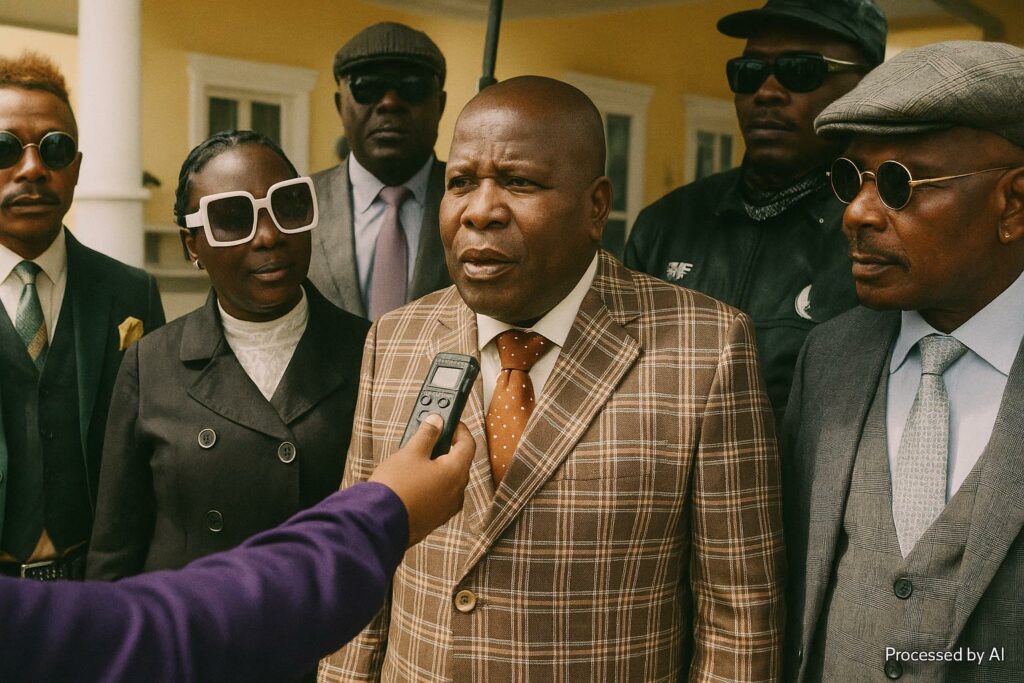From Ouenzé to Bouenza: Continuity in Celebration
When Prefect Marcel Nganongo welcomed a delegation of renowned sapeurs in early July, the gathering extended far beyond a routine protocol visit. The Bouenza administrator, long known in Brazzaville’s fashion circles for his unwavering commitment to the “religion kitendi”, confirmed that Madingou will host the ninth Festival de la Sape on 14 August 2025. According to officials familiar with the planning, the date was intentionally chosen to precede the Independence Day festivities, weaving the fabric of sartorial artistry into the national commemorations.
Local journalists from Les Dépêches de Brazzaville have since corroborated the meeting, while Radio Congo insiders suggest that preliminary logistical assessments are already under way. Such early confirmation contrasts favourably with the tighter schedules of previous editions, signalling a desire to scale up both organisational reach and international visibility.
Sape Tradition as Cultural Diplomacy
La Sape, an abbreviation of Société des Ambianceurs et des Personnes Élégantes, has evolved from a flamboyant street expression into a distinctive vector of Congolese soft power. Cultural anthropologists at Marien Ngouabi University argue that its colourful pageantry projects an image of creativity and resilience that often escapes conventional geopolitical analyses. By placing the 2025 festival in Madingou—an emblematic crossroads between the country’s north and south—the organisers appear intent on broadening that narrative beyond Brazzaville’s customary catwalks.
Diplomats posted in Kinshasa privately concede that the movement’s transborder resonance reinforces cultural ties with the neighbouring Democratic Republic of Congo, a form of people-to-people diplomacy that rarely features in communiqués yet frequently opens informal channels of dialogue.
Madingou’s Strategic Selection
Madingou, capital of Bouenza, commands a pivotal position along National Route 1, linking the industrial hub of Pointe-Noire to the political heart of Brazzaville. Local authorities believe that hosting the festival there could diversify tourist flows traditionally centred on coastal corridors. The municipal council, in a statement relayed by Agence d’Information d’Afrique Centrale, anticipates an influx of approximately ten thousand visitors over the long Independence Day weekend.
Urban planners note that the city’s renovated Place de l’Indépendance offers an open-air runway naturally suited to the elaborate choreography of sapeur duels. By pairing the festival with ongoing infrastructure upgrades—financed in part through the national Plan de Développement Local—the government can showcase both cultural effervescence and tangible development outcomes.
Governmental Engagement and Soft Power
The Presidency’s Cultural Affairs Bureau has long framed the sape movement as a lever for nation-branding. In a recent round-table, a senior adviser highlighted its capacity to recalibrate external perceptions of Congo-Brazzaville away from reductive conflict narratives toward an emphasis on stylistic ingenuity. International observers from the French Institute repeated a similar assessment, stressing that garments can sometimes speak louder than communiqués.
By offering institutional backing without imposing thematic strictures, the administration preserves the authenticity prized by aficionados while signalling that cultural pluralism remains compatible with state cohesion. In the words of one senior diplomat, “a well-cut lapel resonates across linguistic divides”, hinting at the elegance with which cultural events can smooth the edges of geopolitics.
Economic and Social Ripple Effects
Beyond the spotlight, the festival carries tangible socioeconomic weight. Tailors in the Ouenzé, Poto-Poto and Bacongo neighbourhoods report a surge in orders for bespoke suits destined for Madingou’s runway, an uptick that threads local craftsmanship into regional value chains. The National Federation of Artisans projects a ten-percent rise in revenues for small workshops during the pre-festival months.
Youth associations in Bouenza have also seized the opportunity to organise training sessions on textile design and digital marketing, initiatives co-funded by the Ministry of Small- and Medium-Sized Enterprises. According to the United Nations Development Programme’s latest brief on creative industries, such grassroots engagements can yield multipliers well beyond the fashion sector, nurturing employability and social cohesion.
A Stage Set for August 2025
With just over a year left, the organisational clock is ticking, yet the mood among stakeholders is markedly optimistic. Prefect Nganongo has appointed a steering committee incorporating cultural entrepreneurs, security services and representatives of the diaspora community. Early sponsorship pledges from telecom and beverage companies hint at a maturing ecosystem that sees alignment between corporate branding and national cultural assets.
As the tricolour flags rise on 14 August 2025, the polished shoes and vividly patterned suits of Congo’s sapeurs will stride down Madingou’s promenades, offering spectators a tableau that fuses elegance with patriotic fervour. For spectators and diplomats alike, the festival is poised to reaffirm that in Congo-Brazzaville sartorial excellence remains more than fashion—it is a diplomatic language, stitched with pride, resilience and forward-looking confidence.

